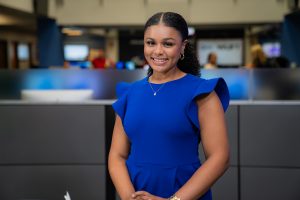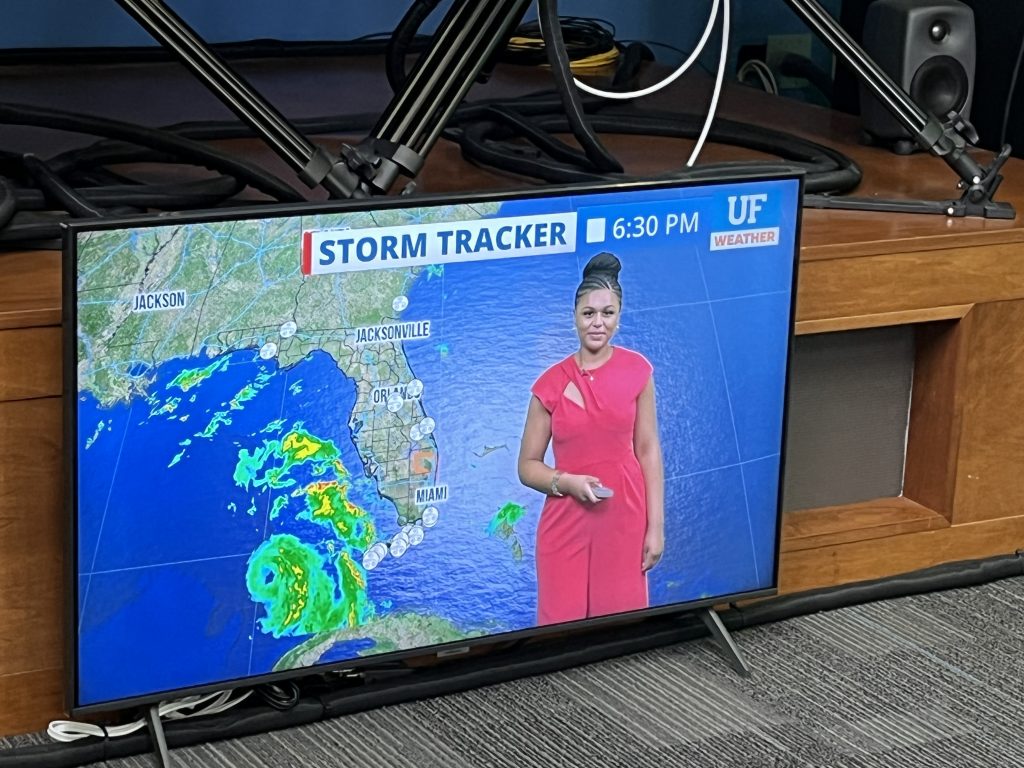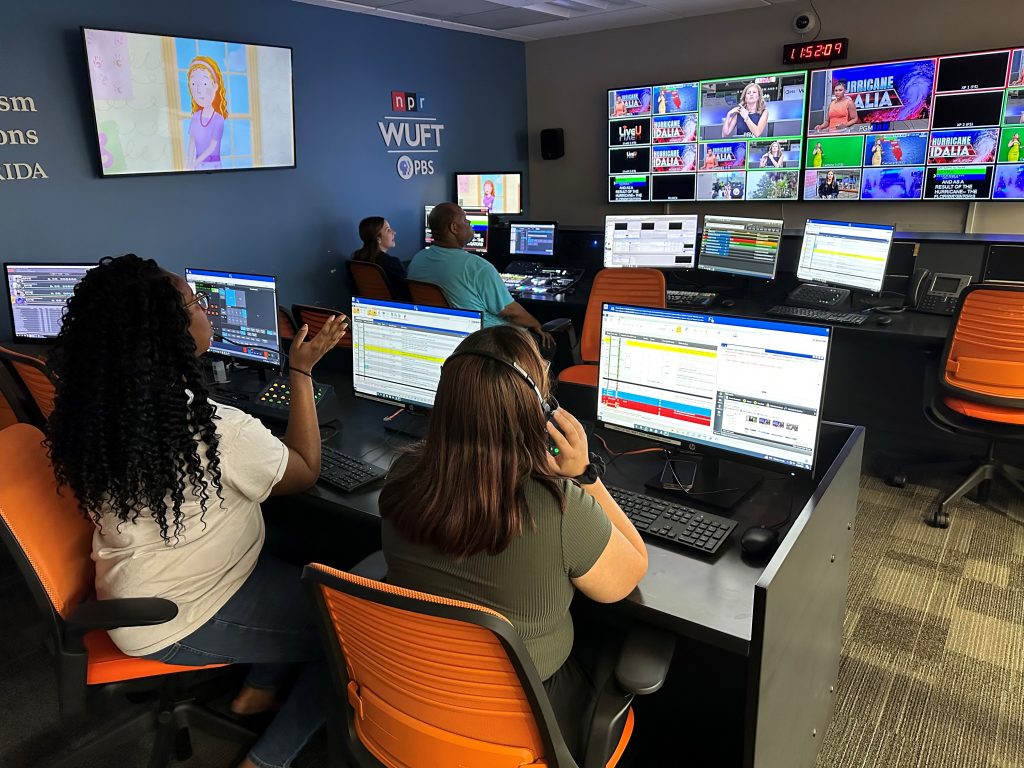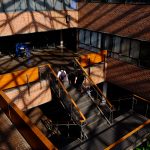Coverage of Hurricane Idalia Convinces Journalism Senior She Can Weather Any Storm
By Derrah Getter, Journalism senior

Sleeping on the floor of a radio booth in the University of Florida College of Journalism and Communication’s Innovation News Center (INC) is something I never thought I’d be proud of, but after 36 hours, I was just as giddy as ever.
During Hurricane Idalia, which hit Florida on Aug. 30, 2023, as a category 4 storm, 17 students accompanied nine INC news managers to cover the dangerous storm’s arrival and impact. Over the span of two days, our live cut-ins were broadcast on WUFT-TV, Gainesville’s local PBS affiliate, every three hours like clockwork.
Leading up to Idalia’s arrival, I wasn’t anticipating this opportunity. To be totally honest, I wasn’t even taking this hurricane seriously. Having lived in Florida for the past 21 years made me look at the arrival of a hurricane like any other day. But my mom and grandma told me to make hurricane preparations, so I did. On Aug. 28, with my low fuel light on two days before the storm was projected to make landfall, I was waiting in line to get gas when a notification popped up on my phone. The INC was soliciting volunteers to help cover the hurricane before, during, and after the storm’s arrival.
Before getting out the car, I responded in the parking lot of my apartment complex with the non-perishable food items I just bought still sitting in my trunk. Where I would sleep and how long I’d be on campus didn’t even cross my mind. I began that day preparing for Idalia’s impact, but I was now preparing for how it was going to impact others. In that moment, I began to care.
A few hours later, UF announced its closure beginning at noon on Aug. 29. I went to sleep with Weather Nation on in the background hoping my brain would soak up what was being said.

Tuesday started out as a typical day. As I was walking to my 9:30 a.m. class, I was overcome with uncertainty. Sandbags suddenly lined the building’s doorways. I sat restlessly for the entire 50-minute class. I thought about how the other students would be spending their day. Did they prepare, or would it be another Tuesday for them?
I went home and began researching, watching and reading everything I could think of. At this point, my mind was racing. How could I cover a hurricane when I’ve only ever covered a severe thunderstorm? I was second guessing my ability and was too focused on my lack of experience. Idalia was inching up the west coast. My time to think turned to time for action. I packed three days’ worth of food, an overnight bag and headed back to campus.
Upon my arrival at 5 p.m. on Aug. 29, I was informed I would be going live at 8 p.m. It had been almost a month since I had been in front of the green screen. It didn’t matter now, all that mattered was getting the latest info and getting it right. I jotted down notes and began building my forecast for the show. By 8 p.m., Idalia, was a category 2 hurricane.
I spent the hours leading up to midnight building hurricane graphics for the next day’s cut ins. I was trying to stay up as long as possible and sleep as little as possible. I didn’t want to miss a thing. I worked until I could no longer keep my eyes open. I picked the closest spot to the Weather Center, which happened to be a radio booth. I knew I wouldn’t oversleep there. Either the morning radio crew or the newsroom noises would wake me up if my alarm failed to. My duffle bag was my pillow, and the floor was my mattress. Idalia was still a category 2.

At 5 a.m., my Wednesday began. The first thing I did was refresh the National Hurricane Center’s (NHC) webpage. My heart dropped to my stomach as I read that Idalia was upgraded to a category 4. I checked in with my friends and family. Thankfully everyone I knew was safe.
Out of the corner of my eye, I saw a reporter live at UF’s Cedar Key campus on one of the newsroom’s TVs. I was mortified when I saw water almost covering the building’s sign with the UF logo that read “Nature Coast Biological Station.”
Idalia’s effects were becoming more imminent. The hurricane made landfall in Florida near Keaton Beach at 7:45 a.m. as a category 3 storm. Our coverage was in full swing.
The news cut-ins on PBS interrupted kids’ programming. I didn’t want to scare them. I learned the art of remaining calm yet authoritative. People needed to know that this was serious, but they didn’t need to be scared. By this time, I had received messages from NBC News in Miami and Times Radio in London expressing interest in collaborating. For the first time, I didn’t just feel like a student forecaster, I felt like a professional.
My role was important. All our live coverage occurred simultaneously with NHC updates. It was my job to share that information with our viewers across North Central Florida in real time.
After Idalia crossed state lines entering Georgia, our storm updates had ended. I walked out of the INC with more confidence in myself and my craft than when I walked in the day prior. I left feeling ready to take on whatever storm comes my way.
Category: College News, Profiles
Tagged: Derrah Getter Hurricane Idalia Innovation News Center
Subscribe to our News Digest


